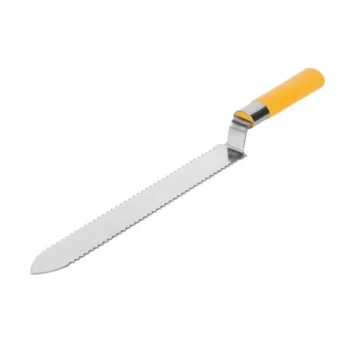The primary advantage of using bags or cling wrap over rigid takeaway containers is their physical form factor. The weight of the pollen substitute flattens the bag or wrap into a thin slab, which can be placed directly on top of the brood frames inside the hive, giving the bees immediate and easy access to the food.
The choice between a bag and a rigid container isn't just about storage; it's a strategic decision about how you present food to your bees. The flattened shape of a bag allows for optimal placement within the hive, which directly impacts how effectively the colony can use the supplement.

Why Placement Inside the Hive is Critical
When feeding a pollen substitute, the goal is to get the protein to the nurse bees who need it to produce brood food. The closer the supplement is to the brood nest, the more efficiently they can consume and utilize it.
The Advantage of a Thin Slab
Using a self-seal food bag or cling wrap allows the pollen dough to be flattened into a patty or slab.
This thin profile is crucial. It can be laid directly across the top bars of the frames in the brood box, right underneath the hive's inner cover or crownboard.
Maximizing Bee Access
Once the slab is in place, you simply slice the top of the bag open. This exposes the pollen substitute to the cluster of bees below.
The bees can then access the food directly without having to travel far from the brood they are tending, ensuring the supplement is used where it's needed most.
The Problem with Rigid Containers
A takeaway container is too bulky to fit in this space. Placing it on the top bars would create a large gap, breaking the essential "bee space" and disrupting the hive's climate control.
While you could place an open container on the crownboard, it forces the bees to leave the warmth and security of the brood nest to find the food, making it a less efficient feeding method.
Understanding the Trade-offs
While bags and wrap are superior for in-hive placement, it's important to understand the complete picture.
Storage and Handling
All recommended containers—bags, wrap, and takeaway boxes—serve the primary storage function of keeping air out. This prevents the pollen dough from drying out and hardening.
Rigid containers can be slightly less messy to fill and transport, but this convenience comes at the cost of effective placement within the hive.
Potential for Drying
A key reason to use any sealed method is to maintain the softness of the dough. If the substitute becomes hard, the bees will not be able to consume it.
Bags, if not sealed properly or if they get a puncture, can lead to the edges of the slab drying out. However, their direct placement over the warm cluster often helps maintain a suitable consistency.
Making the Right Choice for Your Goal
Your choice of container should be guided by your primary objective for feeding.
- If your primary focus is maximizing consumption and colony health: Use self-seal bags or cling wrap to create thin slabs for direct placement on the brood frames.
- If your primary focus is simple, clean handling outside the hive: A takeaway container is adequate for storage, but you will need a separate strategy for presenting the food to the bees effectively.
Ultimately, effective bee nutrition depends on making the food as accessible as possible for the colony.
Summary Table:
| Feature | Bags / Cling Wrap | Takeaway Containers |
|---|---|---|
| In-Hive Placement | Thin slab fits on brood frames | Too bulky, disrupts bee space |
| Bee Access | Direct access for nurse bees | Bees must leave brood nest |
| Primary Advantage | Maximizes consumption & colony health | Convenient for storage & transport |
| Key Consideration | Ensure proper sealing to prevent drying | Requires separate feeding strategy |
Maximize your colony's health with the right feeding supplies from HONESTBEE.
We supply commercial apiaries and beekeeping equipment distributors with the wholesale supplies needed for efficient, effective feeding programs. Our selection of high-quality products is designed to help you support strong, productive colonies.
Contact HONESTBEE today to discuss your wholesale needs and ensure your bees get the nutrition they deserve.
Visual Guide

Related Products
- Adjustable Formic and Acetic Acid Dispenser for Bee Mite Treatment
- Colorful Silicone Beeswax Foundation Mold Mould for Beekeeping
- Wooden Queen Bee Excluder for Beekeeping
- Heavy-Duty Galvanized Steel W-Style Pallet Clip
- HONESTBEE 4-Way Metal Corner Wooden Bee Escape Board
People Also Ask
- What are phoretic mites? A Beekeeper's Guide to Monitoring Varroa Infestation
- What should be done after treating a colony for varroa mites? A Step-by-Step Guide to Verifying Success
- What are some common predators and pests that target beehives? Protect Your Hives from Bears, Mites, and Beetles
- What is the optimal time for varroa mite control in nucs? Maximize Efficacy with Perfect Timing
- What does Chewed Down Brood (CDB) indicate in bee colonies? A Sign of Varroa Mite Infestation



















